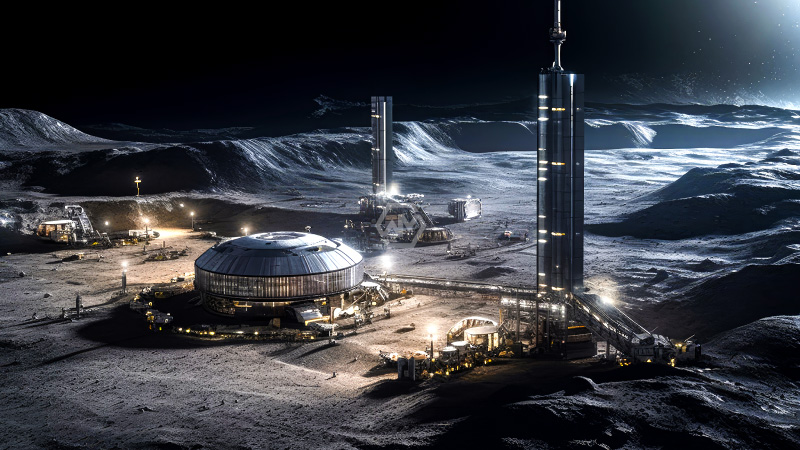- By about 2030, NASA’s Artemis Program hopes to establish a base on the moon.
- The portable generator can be sent into orbit and will be ready for a Moon outpost in 2030.
- Chinese intend to construct their first base in 2028 as a representation of their position as the first.
Astronauts might be able to spend a lot of time on the Moon because of a new energy source that scientists have created. By about 2030, NASA’s Artemis Program hopes to establish a base on the moon.
Nuclear fuel cells the size of poppy seeds have been created by Bangor Researchers to provide the energy required to support life. The Moon can serve as a launchpad to other planets and is home to significant materials required for contemporary technologies.
Space-based fuel
The Los Alamos National Laboratory in the US, Rolls Royce, the UK Space Agency, and the Nuclear Futures Institute at Bangor University are a few of the collaborators in the laboratory.
The team intends to thoroughly test the nuclear fuel “over the next few months.” Rolls Royce’s mini nuclear generator might be powered by the Trisofuel cell, a tiny nuclear fuel cell.
The portable generator can be sent into orbit and will be ready for a Moon outpost in 2030. Wales is now well-known thanks to research from Bangor University, but it might also be applied elsewhere, including in disaster areas.
A nuclear rocket power system is also being developed by the team; if successful, it may practically cut the time it takes to get to Mars in half. In the 2030s, lunar bases will most certainly be built, most likely by China or America, according to geopolitical expert and journalist Tim Marshall.
He thinks that significant powers will be there to see the enormous advance. The Chinese intend to construct their first base in 2028 as a representation of their position as the first. Both nations will have a base by the early 2030s.
Because materials like titanium, lithium, silicon, and iron, which are needed for 21st-century technologies, are readily available, moon bases have a huge potential.
However, Marshall cautions that if space becomes more commercialized, the antiquated space regulations, which were enacted in 1967, might become more challenging. He thinks that without modernized legislation, competition will function outside of a legal framework.



